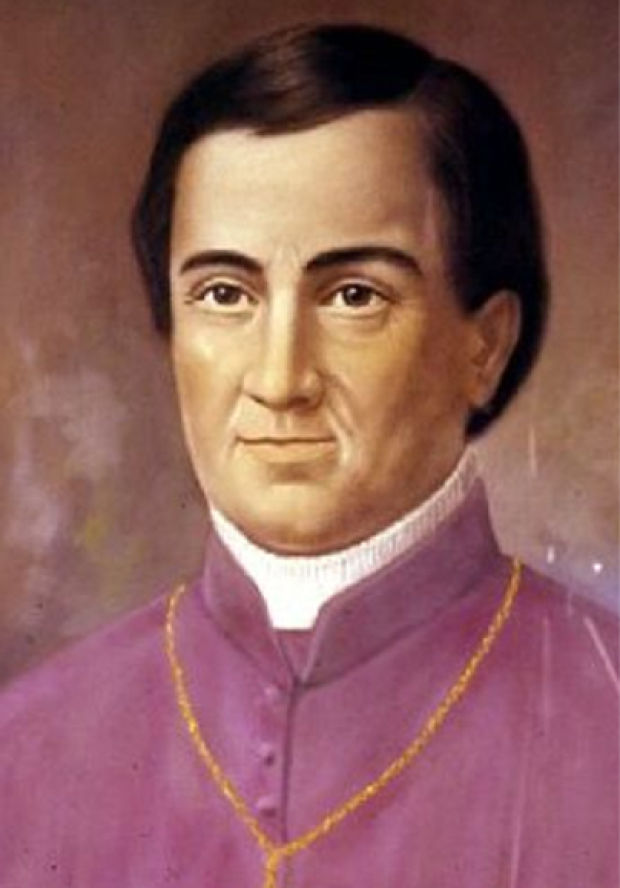 The arrival of an increasing number of German Catholic immigrants in St. Louis created urgent needs for more German priests and a church exclusively for German use. Although Bishop Joseph Rosati (pictured at right) by 1839 had purchased land for a German church (which he planned to name "St. Mary for the Germans"), he was unable to raise sufficient funds to begin construction before his death in 1843 - a year in which Europe was flooded with reports accusing American bishops of neglecting the needs of German Catholics in this country. Rosati's successor, Bishop Peter Richard Kenrick (pictured below left), responded to these demands and accepted Ann Lucas Hunt's donation of a parcel of land that was better situated with respect to German settlement than Rosati's land. Kenrick then purchased, from Mrs. Hunt's brother the remaining half of the proposed church site for $2,500.
The arrival of an increasing number of German Catholic immigrants in St. Louis created urgent needs for more German priests and a church exclusively for German use. Although Bishop Joseph Rosati (pictured at right) by 1839 had purchased land for a German church (which he planned to name "St. Mary for the Germans"), he was unable to raise sufficient funds to begin construction before his death in 1843 - a year in which Europe was flooded with reports accusing American bishops of neglecting the needs of German Catholics in this country. Rosati's successor, Bishop Peter Richard Kenrick (pictured below left), responded to these demands and accepted Ann Lucas Hunt's donation of a parcel of land that was better situated with respect to German settlement than Rosati's land. Kenrick then purchased, from Mrs. Hunt's brother the remaining half of the proposed church site for $2,500.
Although the cornerstone of St. Mary of Victories was laid June 25, 1843, construction was delayed due to financial problems of the diocese which was burdened with a large debt incurred from Rosati's building projects. This state of affairs prompted Bishop Kenrick late in 1843 to petition the Leopoldine Society of Vienna for aid:
I take the liberty of informing your grace concerning the needs of the German Catholics of the Diocese of St. Louis and especially of this city, the number of which has now risen to 6,000. No serious attempt has so far been made to provide a church, exclusively for the use of the German Catholics, but they have been obliged until now, to attend divine service in the church which belongs to the French and American Catholics....As it would be unreasonable in me to increase my obligations at the present moment, I am constrained to suspend work on the building, which is so near completion. The German Catholics, for the most part, belong to the working classes, and feel all too keenly the pressure of hard times, to give any hope of assistance.
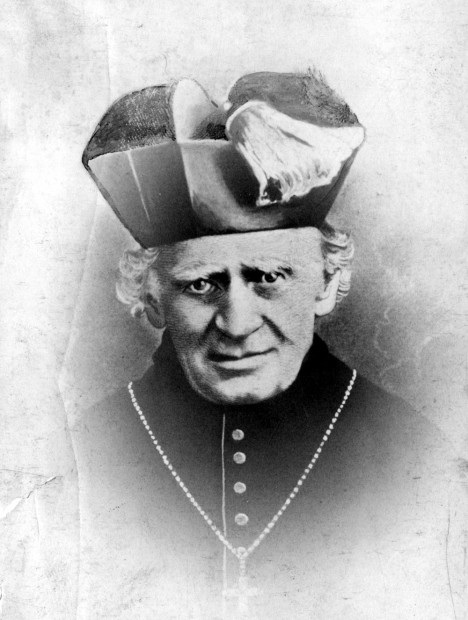 The Leopoldine Society responded favorably and forwarded a large sum. Supplemented by Kenrick's personal gift of $1,000 and local offerings, the church completed only with nave at a cost of $8,000 was dedicated September 15, 1844. According to parish records the architect of St. Mary's was Franz Saler, an Austrian-born parishioner who first appears in the 1843 City Directory as a bricklayer and mason. Credited with being "the favorite building contractor of the Catholic sisterhoods," Saler was also the contractor and builder for St. Patrick's (1845) and St. Vincent de Paul's (1845). During the 1850's he worked as a lumber merchant and founded and owned two German newspapers, the Herold des Glaubens and Taegliche Chronik; by the 1860's, he was involved with book binding and selling. A founding spirit and first treasurer of the German St. -Vincent Orphan Society, Saler was very active in parish affairs and was one of the earliest members of the first conference of the St. Vincent de Paul Society.
The Leopoldine Society responded favorably and forwarded a large sum. Supplemented by Kenrick's personal gift of $1,000 and local offerings, the church completed only with nave at a cost of $8,000 was dedicated September 15, 1844. According to parish records the architect of St. Mary's was Franz Saler, an Austrian-born parishioner who first appears in the 1843 City Directory as a bricklayer and mason. Credited with being "the favorite building contractor of the Catholic sisterhoods," Saler was also the contractor and builder for St. Patrick's (1845) and St. Vincent de Paul's (1845). During the 1850's he worked as a lumber merchant and founded and owned two German newspapers, the Herold des Glaubens and Taegliche Chronik; by the 1860's, he was involved with book binding and selling. A founding spirit and first treasurer of the German St. -Vincent Orphan Society, Saler was very active in parish affairs and was one of the earliest members of the first conference of the St. Vincent de Paul Society.
While a significant spiritual and cultural victory was won for St. Louis German Catholics with the construction of St. Mary of Victories, Bishop Kenrick's pastoral letter of May 25, 1845, compromised the achievement. In that document the Bishop divided the city into four parishes (previously all were included in the St. Louis Cathedral parish) and, interpreting the ruling of the Council of Trent, established St. Mary's as a subsidiary or succursal parish for the five hundred German families living within the Cathedral parish. Such an arrangement insured the continuity of German language and customs, but because of its succursal status the church was denied full juridical diocesan rights a situation that gave rise to bitter conflict later in the century.
During the pastorate of the first rector, Rev. John P. Fischer (1844-1847), an old log house across the street from the church was purchased for a combined priests' house and school. This early humble provision for a parish school where German was spoken was an important foundation for ethnic identity and the alliance of religion and education valued by the Germans. Father Fischer planned the program for the interior wall paintings of the church and hired St. Louis church decorator Paul Hoegen to execute them. The priest also purchased the stained glass windows praised for their artistry in an 1844 German newspaper printed in Cincinnati. Also stationed at St. Mary's in the early years was Rev. Ambrose J. Heim, who was instrumental in organizing for St. Louis the first conference of the St. Vincent de Paul Society in North America. Father Heim innovated a banking system for St. Mary immigrants (who distrusted private banks) that was so successful Archbishop Kenrick adopted Heim's method, extending it into the "Archbishop's Bank" and appointed Heim secretary to the Archdiocese in 1847.
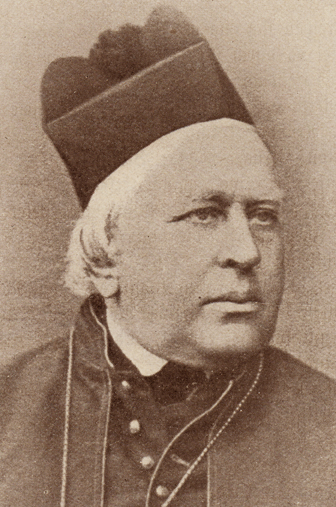 St. Mary of Victories' second pastor, Rev. Joseph Melcher (pictured right) from Vienna, had served twelve years as chaplain to the Court of Modena before accepting Bishop Rosati's offer in 1843 for a missionary assignment in the St. Louis diocese. Father Melcher's impressive credentials qualified him for selection as Bishop Kenrick's theologian at the Sixth Provincial Council of Baltimore, 1847. The same year Kenrick appointed him Vicar-General for the St. Louis Germans and sent him on the first of three recruiting trips to Europe (between 1847 and 1864) in search of candidates for the priesthood to serve principally in the diocese's German-speaking parishes.
St. Mary of Victories' second pastor, Rev. Joseph Melcher (pictured right) from Vienna, had served twelve years as chaplain to the Court of Modena before accepting Bishop Rosati's offer in 1843 for a missionary assignment in the St. Louis diocese. Father Melcher's impressive credentials qualified him for selection as Bishop Kenrick's theologian at the Sixth Provincial Council of Baltimore, 1847. The same year Kenrick appointed him Vicar-General for the St. Louis Germans and sent him on the first of three recruiting trips to Europe (between 1847 and 1864) in search of candidates for the priesthood to serve principally in the diocese's German-speaking parishes.
Two future pastors of St. Mary's, Henry Muehlsiepen and William Faerber, were brought to St. Louis from Germany by Father Melcher in addition to the Ursuline nuns who first taught at St. Mary's school. In 1850, Father Melcher founded the St. Vincent's German Orphan Society on behalf of the many German children who were orphaned during the cholera epidemic of 1849. During Father Melcher's pastorate at St. Mary's (1847-1868), a new brick school was built in 1856 and placed under the direction of the Sisters of St. Joseph who six years later were replaced by the School Sisters of Notre Dame. The new parochial residence, completed in 1859, became a popular meeting place for St. Louis German priests. In 1860, a transept and belfry following the original plans were added to the church, thus bringing the total cost of the building to $13,000, excluding land and interior furnishing. New altars, pews and a pulpit were also installed at this time. It was in October of 1865 that Blessed Francis Xavier Seelos, C.Ss.R., itinerant Redemptorist preacher, with other priests, gave a parish mission in the Church. After declining Pope Pius IX for positions of Bishop of Quincy, Illinois (now a part of the Diocese of Springfield, IL), and Administrator of Church affairs in Chicago, Father Melcher was consecrated first Bishop of Green Bay, Wisconsin, by Archbishop Kenrick in St. Mary of Victories Church, July 12, 1868.
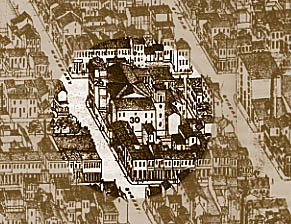 Henry Muehlsipen, a very popular assistant rector for ten years, was appointed pastor in 1868. After coming to St. Louis in 1855 with Father Melcher's recruits, he entered the St. Louis Diocesan Seminary and was ordained by Archbishop Kenrick in 1857. Called the "apostle of the Germans in Missouri," Father Muehlsiepen was an energetic supporter of German Catholic interests serving as the first editor of a Catholic newspaper, Pastoral Blatt, and establishing a "Priester Verein" for the clergy. His responsibilities as Vicar-General for German, Polish and Bohemian parishes in the city forced his resignation from St. Mary's in 1870. (St. Mary's as depicted in 1874, seen at right.) In 1872, the Sisters of St. Mary emigrated to St. Louis and took up residence (and their name) from St. Mary of Victories.
Henry Muehlsipen, a very popular assistant rector for ten years, was appointed pastor in 1868. After coming to St. Louis in 1855 with Father Melcher's recruits, he entered the St. Louis Diocesan Seminary and was ordained by Archbishop Kenrick in 1857. Called the "apostle of the Germans in Missouri," Father Muehlsiepen was an energetic supporter of German Catholic interests serving as the first editor of a Catholic newspaper, Pastoral Blatt, and establishing a "Priester Verein" for the clergy. His responsibilities as Vicar-General for German, Polish and Bohemian parishes in the city forced his resignation from St. Mary's in 1870. (St. Mary's as depicted in 1874, seen at right.) In 1872, the Sisters of St. Mary emigrated to St. Louis and took up residence (and their name) from St. Mary of Victories.
The long pastorate of Rev. William Faerber (1870-1905) was a critical period in German Catholic history, and during the turmoil of the 1880's Father Faerber came forward as a prominent national spokesman for the rights of German-American parishes. Appraised by historians as an "excellent writer and a man of broad cultural interests," Father Faerber in 1873 became editor of Pastoral Blatt, the mouthpiece for pro-German sentiments. After a period of dormancy, lines of battle were drawn in St. Louis when Archbishop Kenrick's 1842 pastoral letter (establishing that only English-speaking parishes had full parochial rights) was republished in the early 1880's. Repudiating suggestions that German group-consciousness was tantamount to separatism and a "canker eating away the life of the Church in the United States" Father Faerber explained:
As a rule, the German in this country soon makes himself at home, and becomes as good an American citizen as those of any other nationality. He has as much love for free American institutions; there is certainly no danger that the German Catholics will prefer the hegemony of Prussia and of Bismarckism to the greatest and freest republic in the world....How in the future the different nationalities will unite harmoniously in one people, what is to become of the different languages, of the German churches and schools will all be arranged later on. Forcible, premature interference is always dangerous. "In nature there is no leap"....it would be dangerous and foolish to wish, at present, forcibly to solve these delicate questions and complications by suppressing, slighting, disfranchising the people of any nationality.
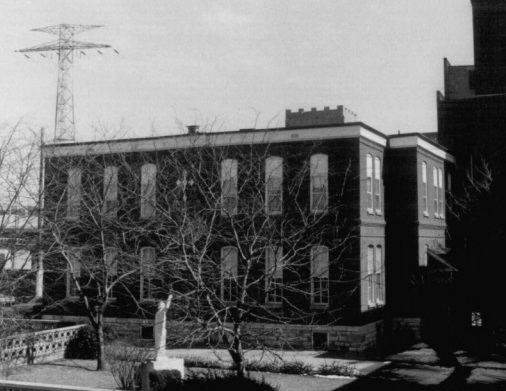 When eighty-two St. Louis-priests petitioned Rome in 1884 for consideration of the succursal parish issue at the Third Plenary Council in Baltimore (November, 1884) Father Faerber (who was in Rome at the time) gave them his support. Although nothing was settled on this matter when the Baltimore meeting adjourned, the Council's endorsement of parish schools was clearly a victory for the Pastoral Blatt which opposed the "Godless or so-called public schools"" and recognized the vital role of the parochial school in preserving their language and culture. Only two years before St. Mary of Victories had built a new, large brick parish school (now the rectory and parish hall - pictured at right). The poelmics of Americanization versus ethnic identity extended beyond local expression: It divided the American Church hierarchy. While some claimed that German priests were attempting to "perpetuate a young Germany here...and care more for sauerkraut and its concomitants than they do for the souls of Americans,"
When eighty-two St. Louis-priests petitioned Rome in 1884 for consideration of the succursal parish issue at the Third Plenary Council in Baltimore (November, 1884) Father Faerber (who was in Rome at the time) gave them his support. Although nothing was settled on this matter when the Baltimore meeting adjourned, the Council's endorsement of parish schools was clearly a victory for the Pastoral Blatt which opposed the "Godless or so-called public schools"" and recognized the vital role of the parochial school in preserving their language and culture. Only two years before St. Mary of Victories had built a new, large brick parish school (now the rectory and parish hall - pictured at right). The poelmics of Americanization versus ethnic identity extended beyond local expression: It divided the American Church hierarchy. While some claimed that German priests were attempting to "perpetuate a young Germany here...and care more for sauerkraut and its concomitants than they do for the souls of Americans,"
Father Faerber queried: But is it possible to give up individualities? To shape all citizens in one mould? Is it a crime to love the dear country of our fathers and ancestors and perhaps of our birth? An appeal to Rome to resolve the inequity between German and English speaking parishes appeared again with the Abbelyn Memorial in 1886. This time both Father Faerber and Rev. Bede Maler of St. Mary of Victories Church entered the arena on the German behalf. The Lucerne Memorial of 1891 raised another storm which forced a position statement from Father Faerber (as Secretary of the German-American Priests' Society) disclaiming any connection with that document which was formulated in Switzerland without American participation. Although the Lucerne Memorial was no more radical than its predecessors in its defense of national churches and schools, misunderstanding and deliberate misrepresentation of the statement led anti-German clerics such as Archbishop Ireland of St. Paul, Minnesota, to view it as "an effort...to dethrone us and foreignize our country in the name of religion." He placed the blame on "the clique of foreign-minded and short-sighted Catholics of St. Louis."
Another priest, Rev. John Conway, declared that "St. Louis is even more aggressively foreign than Milwaukee" and condemned Father Faerber and Vicar-General Muehlsiepen as "tireless workers in the cause of foreignism" and their efforts "a conspiracy against this country." In view of all this, it is not surprising that Father Faerber's 1891 petition to Rome for intervention on his behalf to build a new German church did not meet with success. Rome directed his request to Cardinal Gibbons of Baltimore who concluded that English-speaking St. Vincent's parish could accommodate additional German parishioners and faulted Father Faerber and Vicar-General Muehlsiepen for causing a disturbance.
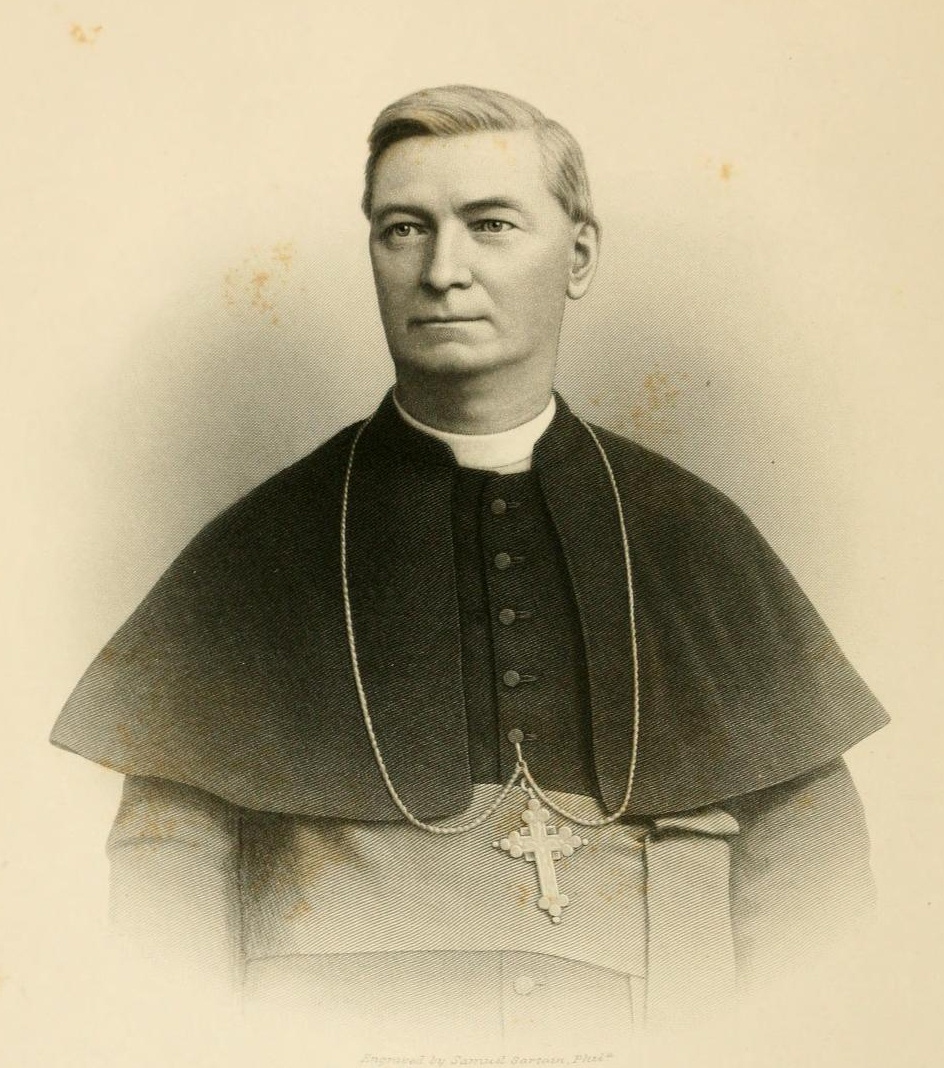 The struggles over succursal parish status were finally put to rest by Archbishop John Joseph Kain (pictured at left) in the Third Synod of St. Louis, 1896, when it was declared that foreign-speaking parishes would be equal to "those of the English language... and that there shall be no distinction between them in as far as parochial rights and privileges are concerned." By that time, however, other factors had begun to erode the parish's strength as immigration declined and second and third generation Germans left the old working-class neighborhood for better housing. Following the death in 1917 of Father Garthoeffner (who founded and developed the first Archdiocese high schools), the ethnic composition of the parish diversified and included several Syrian families among other nationalities. "
The struggles over succursal parish status were finally put to rest by Archbishop John Joseph Kain (pictured at left) in the Third Synod of St. Louis, 1896, when it was declared that foreign-speaking parishes would be equal to "those of the English language... and that there shall be no distinction between them in as far as parochial rights and privileges are concerned." By that time, however, other factors had begun to erode the parish's strength as immigration declined and second and third generation Germans left the old working-class neighborhood for better housing. Following the death in 1917 of Father Garthoeffner (who founded and developed the first Archdiocese high schools), the ethnic composition of the parish diversified and included several Syrian families among other nationalities. "
The decline of the parish was greatly accelerated in 1939 by the first phase of demolition, funded by the National Park Service, within the parish boundaries for the Jefferson National Expansion Memorial. Despite these set backs, an extensive interior and exterior restoration project involving all the parish buildings was undertaken in 1941 and completed for the church's Centennial celebration in 1943. Scarcely more than a decade later "urban progress" dealt another crippling blow to St. Mary of Victories when the Third Street Interregional Highway (now Interstate 55} ruthlessly cut within a few yards of the church's doorsteps.
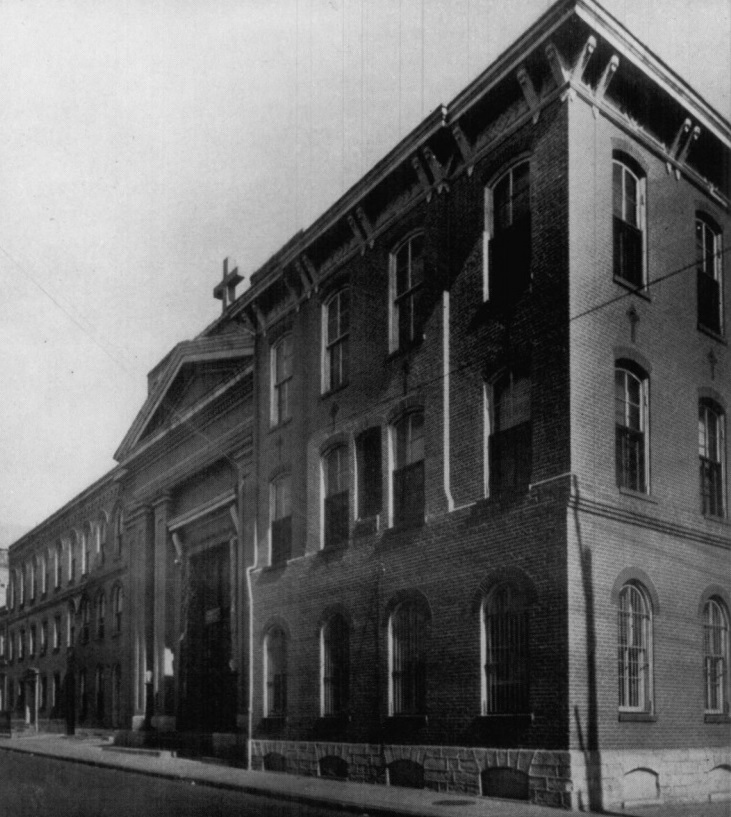 New life was bestowed on St. Mary's in 1957 when the church was turned over to a Hungarian congregation who had been worshipping in St. Stephen's at 12th and Chouteau Streets. Entirely self-supporting, the new parish was unable to maintain the complex. Shortly after their arrival all buildings except the church and school were razed but the Hungarians' commitment to St. Mary's was evidenced by the new roofs on both the church and school, a new floor in the church, and the conversion of the school to a parish hall on the first floor and priests' quarters upstairs. The picture at right shows an early infirmary and convent on either side of the Church. These buildings were once occupied by the Franciscan Sisters of St. Mary who went on to found SSM Health Care.
New life was bestowed on St. Mary's in 1957 when the church was turned over to a Hungarian congregation who had been worshipping in St. Stephen's at 12th and Chouteau Streets. Entirely self-supporting, the new parish was unable to maintain the complex. Shortly after their arrival all buildings except the church and school were razed but the Hungarians' commitment to St. Mary's was evidenced by the new roofs on both the church and school, a new floor in the church, and the conversion of the school to a parish hall on the first floor and priests' quarters upstairs. The picture at right shows an early infirmary and convent on either side of the Church. These buildings were once occupied by the Franciscan Sisters of St. Mary who went on to found SSM Health Care.
Now that ethnic consciousness is viewed as a positive force by both Church and State in America, the German heritage of St. Mary's is still a proud foundation for the Hungarians as they strive to preserve their own language and culture through parish-sponsored activities. Hungarian Cardinal Mindszenty's visit to St. Louis in 1974 brought strong words of encouragement for these efforts and inspired the establishment of a small school named in his honor to provide children with instruction in Hungarian culture and language (now closed).


